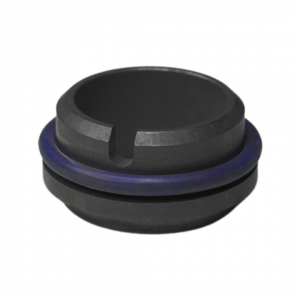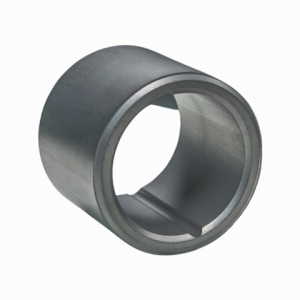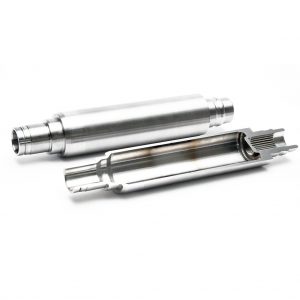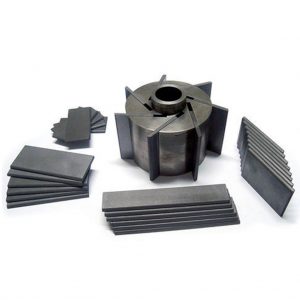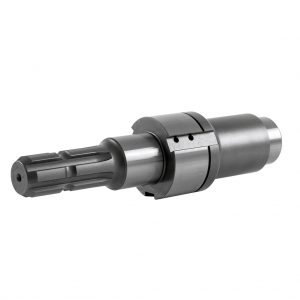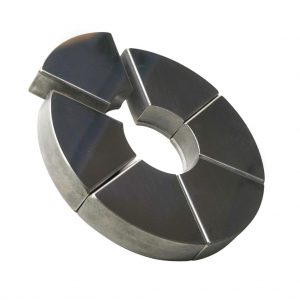The advantages of using stainless steel are obvious in pump manufacturing. Stainless steel is strong, corrosion resistant, has great hot strength, and is low maintenance. This makes it the perfect material for both surface and submersible pumps.
Stainless steel, made up principally of iron and carbon, is a steel alloy containing many elements. Chromium is added to make it resistant to rust, and invaluable for pump manufacturing.
There are several grades of stainless steel in our wide variety of pumps. We consider each component during pump design and fit it with the correct type of stainless steel.
1. Corrosion Resistance
One of the best and most well-known characteristics of stainless steel is that it is extremely corrosion resistant. The addition of chromium content was the key component that gave stainless steel this quality and was seen as the major breakthrough in its development. Stainless steel has evolved a great deal since then with many different types/grades available. We typically use 316 grade stainless steel which also contains 3% molybdenum. This further strengthens its resistance to corrosion against industrial acids, alkaline solutions and makes it particularly resilient in high saline environments (i.e. those by the sea). This founding characteristic has made it highly applicable all over the world.
2. Fire and heat resistance
The resilience of stainless steel as a material is a common theme throughout this blog and its resistance to fire and heat is an integral part of that. Stainless steel has this attribute because of its oxidation resistance, even at high temperatures. This enables it to retain its strength under harsh and extreme temperature conditions very effectively. Chromium again plays an important role in this respect and makes stainless steel a great choice with fire resistance and fire prevention in mind. It’s a material that outperforms the likes of galvanised steel and aluminium in this regard.
3. Hygiene
A benefit of stainless steel that might not immediately come to mind, but is particularly true and important, relates to hygiene. Stainless steel is an extremely hygienic material due to the fact that it is extremely easy to clean and sanitise. It’s smooth, sheen-like and non-porous surface means that the likes of dirt, grime and bacteria struggle to establish themselves on its exterior. When they do, they can very easily be wiped away. The ease of this cleaning and maintenance makes stainless steel an excellent choice in environments where strong hygiene is vital. This is why professional kitchens are made almost exclusively of stainless steel and why you’ll see it relied on heavily in hospitals, laboratories, factories etc.
4. Impact resistance and strength
Stainless steel is an extremely tough and highly durable material with high impact resistance. Part of the reason for this is that stainless steel has low susceptibility to brittleness at high and low temperatures. Not only does this mean that the material will retain its shape, but it means at its melting point it can be more easily welded, cut, fabricated etc as we do in the manufacture of balustrades for example. Interestingly, it’s also a material that’s commonly used in cryogenic applications given its strength in cold working conditions showing again just how strong a material it is.
5. Aesthetic appearance
Another reason why many turn to stainless steel is somewhat superficial but not less valid and that’s to do with its aesthetic appearance. Ever since its creation, stainless steel has been seen as an elegant, attractive and modern material. Many see it as a material that has a brightness that resonates a sense of purity. It is also a material that has stood the test of time and if anything, has become more and more popular as a functional and ornamental choice in residences and commercial properties around the world. It is also a material that complements and works well with most other materials, styles and colours.
6. Sustainability
Another benefit that doesn’t get a lot of attention when it comes to stainless steel but one that is very important as a global issue is the fact that it’s a highly sustainable choice. Stainless steel is typically created from about 70% scrap metal meaning its foundations comes from that which isn’t being used. Furthermore, it’s 100% recyclable in its original form which means it can be repurposed should it cease to serve its original function. It won’t leach toxic chemicals like some other materials during the recycling process and doing so, reduces the need for mining the rarer elements that play an important role in the creation of stainless steel.
7. Long term value
When you consider the longevity of stainless steel as well as all the other factors mentioned above, the total life cycle cost of the material stacks up well. Its increasing prevalence in our society has increased competition from suppliers meaning pricing has been as competitive as it’s ever been. This, coupled with the fact that the maintenance cost for stainless steel is extremely low, means you’ll get great returns when choosing it as your material of choice. Given we’ve also just mentioned that it’s 100% recyclable means that it is really hard to lose out on stainless steel as a solution.
Components
Metal Components for pump
Shaft
Rotor Shaft
Thrust Bearings
Application
Water Technologies
Automotive
Household Appliance


